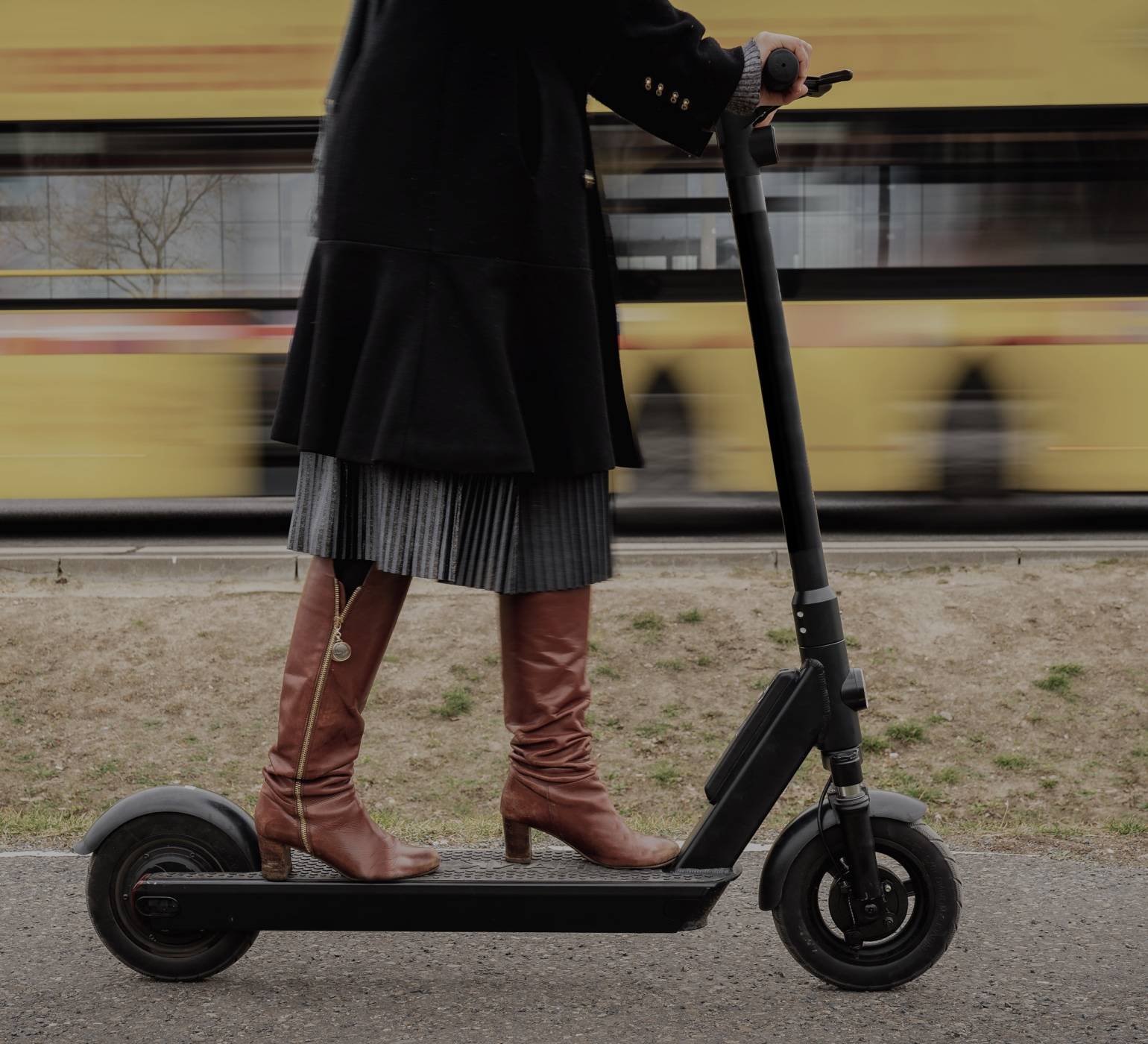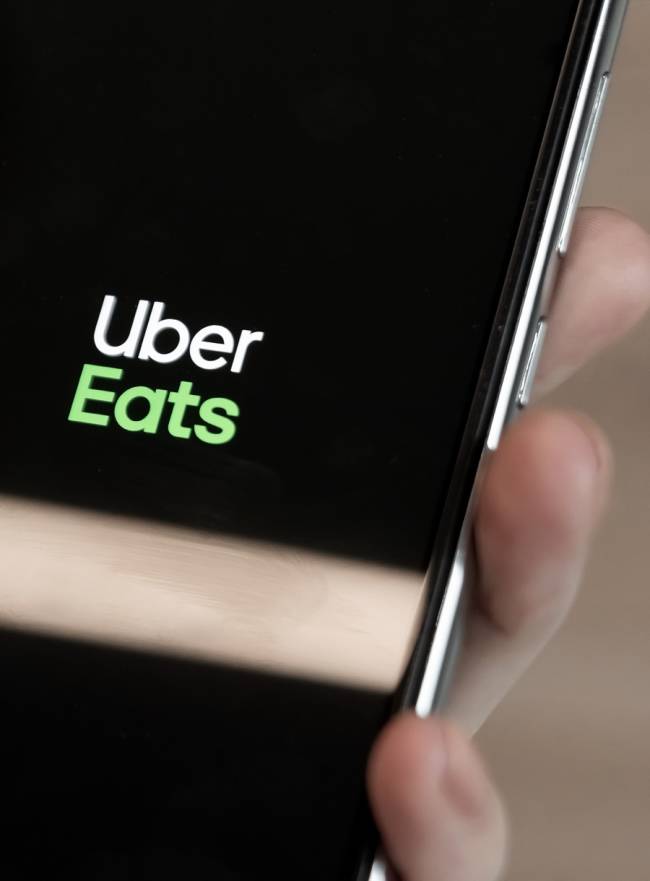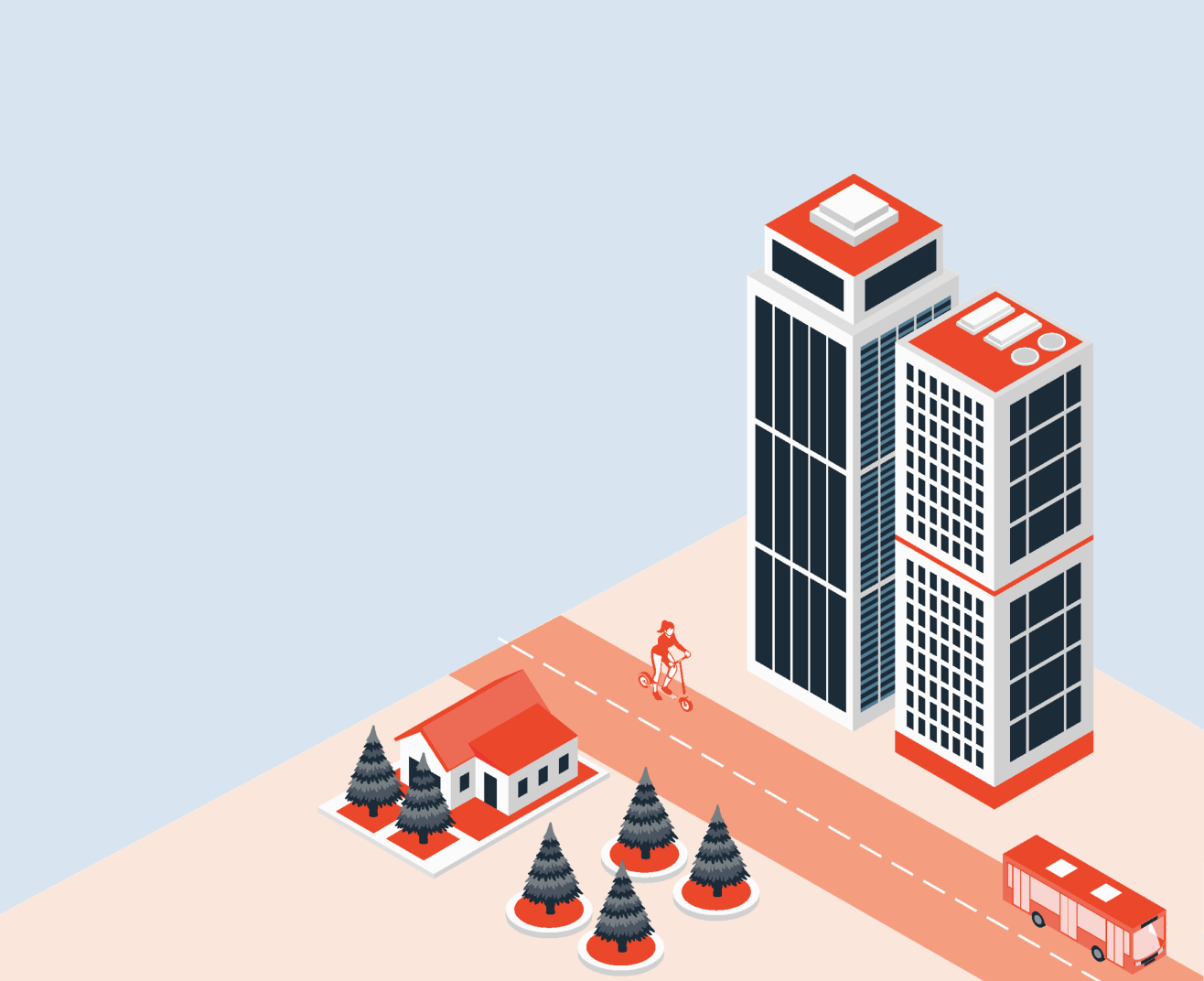
Technical Director – Transport
Louise is a technical leader with a strategic focus on transport advisory, smart mobility and transport planning. Louise enjoys the challenge of considering how technology can help achieve policy goals and how transport systems can be changed in ways that improve the livability of cities and towns.
Louise Baker

Advance the multimodal journey
Where the majority of commuters in Aotearoa still choose private vehicles (car, van, or motorcycle) to carry out their journey, a multimodal journey may have various means of transport. This could include a mix of bikes, cars, buses, trains, ferries, and micromobility devices such as electric scooters.
It’s an approach that works. Nearly half of the bike share, trips in many Chinese cities are part of a multimodal journey that includes public transport.
There is no one-size-fits-all approach, and the best multimodal solution has a variety of options readily available. This allows commuters to seamlessly shift from one mode to another and choose the one most suited to their needs at any given moment.

FULL INSIGHTS
This is a condensed version of our insights. Download the full version with additional research and materials.
Download



Senior Transportation Planner
Shifani is an experienced transport planner with a background in Urban Planning and Environmental Studies. She has previously worked as a Resource Planning Advisor with Waka Kotahi NZ Transport Agency in Christchurch, an Urban Planning Advisor in Kiribati and with Auckland Transport. Shifani is deeply involved in city-shaping projects focusing on industry disruption and what this means for cities.
Shifani Sood


“ Addressing the missing middle of transportation could be the key to overcoming these barriers.
For us, the solution lies in the ‘first and last-mile’, a term used to describe the beginning and end of an individual’s public transport journey.”



Back to main

According to Bloomberg CityLab, shared bikes and scooters tend to be used for different trip types. Scooter rides in 2019 averaged only 1.6 kilometres, were often concentrated in entertainment districts, and tended to be more common in the afternoons, evenings and weekends. Station-based bike share members’ trips averaged 2.4 kilometres and were highly concentrated during commuting hours.
In anticipation of this, Uber is testing out a subscription model in San Francisco and Chicago that, for $25/month, includes free rides on Jump bikes and scooters, fixed ride-hail discounts, and free delivery from Uber Eats.
Although some of the newer options have caused headaches for city authorities around the globe, in the right environment, they have the potential to move more people from four wheels to two (or one). WSP’s Shifani Sood and Louise Baker explore the role of micromobility in decarbonising transport.
Available means of travel are quickly changing, and the increasing focus on sustainability and health is influencing preferred travel modes. Sustainable transport alternatives to private vehicles include biking, walking, and public transport. However, while valuable alternatives, they leave something of a mobility gap - especially for many commuters in urban settings.
Research in the US shows that needing to walk more than 0.8 kilometers to the nearest bus or rail stop reduces trips by around 90%. Less than half (40%) of Auckland’s population is within walking distance of the rapid and frequent transit network but, more importantly, 75% of the population lives within 1.5km and 83% within 2km. This is where personal and shared micro-mobility services offer urban users a car-free alternative to get to/from bus and rail stops.
By: Shifani Sood and Louise Baker
Barriers to cycling and walking include time constraints, distance travelled, lack of suitable cycling and pedestrian infrastructure, or a lack of shower and storage facilities at the end destination. Barriers to public transport include access to networks, scheduling, limited routes, service delays, and potential overcrowding on busy routes, also not wanting to wear a mask and not wanting to be close to a group of unfamiliar people on the bus/train.
Addressing the missing middle of transportation could be the key to overcoming these barriers.
For us, the solution lies in the ‘first and last-mile’, a term used to describe the beginning and end of an individual’s public transport journey.
Cities in recent times have experienced a rapid rise of micromobility options - small single-person flexible modes of transport that include mopeds, bicycles, and scooters, electric or manual, docked or dockless.
Back to main

Back to top

PART 3

Micromobility:
the missing middle



Back to main



Technical Director – Transport
Louise is a technical leader with a strategic focus on transport advisory, smart mobility and transport planning. Louise enjoys the challenge of considering how technology can help achieve policy goals and how transport systems can be changed in ways that improve the livability of cities and towns.
Louise Baker



Senior Transportation Planner
Shifani is an experienced transport planner with a background in Urban Planning and Environmental Studies. She has previously worked as a Resource Planning Advisor with Waka Kotahi NZ Transport Agency in Christchurch, an Urban Planning Advisor in Kiribati and with Auckland Transport. Shifani is deeply involved in city-shaping projects focusing on industry disruption and what this means for cities.
Shifani Sood

FULL INSIGHTS
This is a condensed version of our insights. Download the full version with additional research and materials.
Download
According to Bloomberg CityLab, shared bikes and scooters tend to be used for different trip types. Scooter rides in 2019 averaged only 1.6 kilometres, were often concentrated in entertainment districts, and tended to be more common in the afternoons, evenings and weekends. Station-based bike share members’ trips averaged 2.4 kilometres and were highly concentrated during commuting hours.
In anticipation of this, Uber is testing out a subscription model in San Francisco and Chicago that, for $25/month, includes free rides on Jump bikes and scooters, fixed ride-hail discounts, and free delivery from Uber Eats.
Advance the multimodal journey
Where the majority of commuters in Aotearoa still choose private vehicles (car, van, or motorcycle) to carry out their journey, a multimodal journey may have various means of transport. This could include a mix of bikes, cars, buses, trains, ferries, and micromobility devices such as electric scooters.
It’s an approach that works. Nearly half of the bike share, trips in many Chinese cities are part of a multimodal journey that includes public transport.
There is no one-size-fits-all approach, and the best multimodal solution has a variety of options readily available. This allows commuters to seamlessly shift from one mode to another and choose the one most suited to their needs at any given moment.

“ Addressing the missing middle of transportation could be the key to overcoming these barriers.
For us, the solution lies in the ‘first and last-mile’, a term used to describe the beginning and end of an individual’s public transport journey.”


Research in the US shows that needing to walk more than 0.8 kilometers to the nearest bus or rail stop reduces trips by around 90%. Less than half (40%) of Auckland’s population is within walking distance of the rapid and frequent transit network but, more importantly, 75% of the population lives within 1.5km and 83% within 2km. This is where personal and shared micro-mobility services offer urban users a car-free alternative to get to/from bus and rail stops.
Barriers to cycling and walking include time constraints, distance travelled, lack of suitable cycling and pedestrian infrastructure, or a lack of shower and storage facilities at the end destination. Barriers to public transport include access to networks, scheduling, limited routes, service delays, and potential overcrowding on busy routes, also not wanting to wear a mask and not wanting to be close to a group of unfamiliar people on the bus/train.
Addressing the missing middle of transportation could be the key to overcoming these barriers.
For us, the solution lies in the ‘first and last-mile’, a term used to describe the beginning and end of an individual’s public transport journey.

Although some of the newer options have caused headaches for city authorities around the globe, in the right environment, they have the potential to move more people from four wheels to two (or one). WSP’s Shifani Sood and Louise Baker explore the role of micromobility in decarbonising transport.
Available means of travel are quickly changing, and the increasing focus on sustainability and health is influencing preferred travel modes. Sustainable transport alternatives to private vehicles include biking, walking, and public transport. However, while valuable alternatives, they leave something of a mobility gap - especially for many commuters in urban settings.
Cities in recent times have experienced a rapid rise of micromobility options - small single-person flexible modes of transport that include mopeds, bicycles, and scooters, electric or manual, docked or dockless.
By: Shifani Sood and Louise Baker
Micro- mobility:
the missing middle
PART 3
